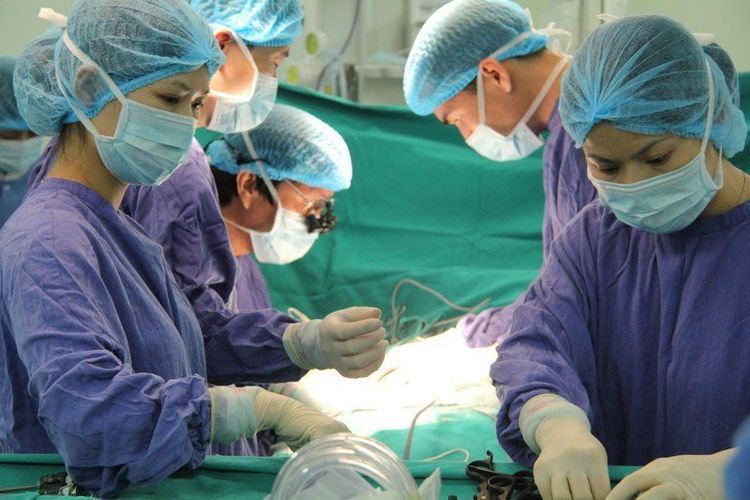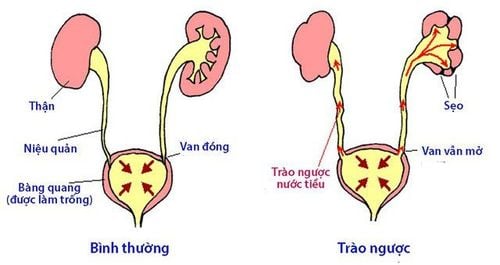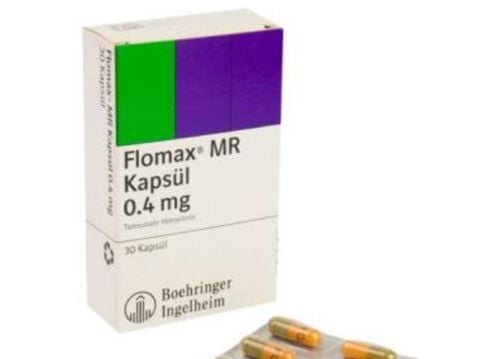This is an automatically translated article.
The article was professionally consulted with Master, Doctor Le Phuc Lien - Urologist - Department of General Surgery - Vinmec Central Park International General Hospital.Surgery to insert the ureter into the bladder is indicated in many pathological cases to help patients avoid urinary discomfort.
1. In which cases is surgery to insert the ureter into the bladder indicated?
Re-insertion of the ureter into the bladder can be performed from inside or outside the bladder as long as it does not cause ureteral stricture and is resistant to vesicoureteral reflux.Indicated in the following cases:
Congenital vesicoureteral reflux Narrowing of the lower third of the ureter due to interference in the bladder area Renal transplantation Lower third ureteral stenosis due to stones, tuberculosis, after internal lithotripsy retrograde cystoscopy Ureteral cyst tumor (after cystectomy) Enlarged ureter with stricture or regurgitation. Contraindications:
Injury to the lower third of the ureter with a length of more than 5 cm Ureteral stenosis with pathological renal function < 15% (renal scan), upper urinary tract lesions (tumor, advanced tuberculosis... ) Severe disease of the lower urinary tract. Bladder atrophy Untreated urethral stricture. Progressing medical disease such as cardiovascular disease, lung disease, infection... Principle of surgery:
No reflux phenomenon Urine from the bladder to the ureter Ensures the circulation of urine from the ureter to the bladder to the urethra without urine stagnation Create a tunnel running under the bladder lining long enough The ureter is not kinked The new management must be wide enough. Complications that may occur after surgery to insert the ureter into the bladder:
Narrowing or obstruction of the ureter due to angulation or because the submucosal tunnel is too narrow Reflux due to the submucosal tunnel is too short Necrosis of the lower end of the urinary tract The ureter is usually caused by damage to the blood vessels in the ureter wall during dissection.

Bệnh nhân ghép thận được chỉ định phẫu thuật cắm niệu quản vào bàng quang
2. The surgical process
2.1 Preparation for surgery
Performer: A specialist in urology. Before surgery, patients need to conduct: Computed tomography of the urinary system with contrast, tests to evaluate kidney function, if necessary, radiation therapy is required. kidney shape; Ensure complete treatment of urinary tract infections.2.2 Steps to take
The patient was lying supine, had a urinary catheter placed during surgery, was anesthetized The skin incision along the Mac Burney line was extended upward Dissection exposed the ureter, care should be taken not to damage the blood vessels supplying the ureter, and dissect the ureter. The ureter descends to a narrow position close to the bladder. Exposing the bladder wall: there are 2 methods of inserting the ureter into the bladder. Inserting the ureter into the bladder by the Politano - Leadbetter method: Opening the bladder and dilating the bladder edges Using a knife penetrates the lateral wall of the bladder near the triangle. Pulling the ureter through the stoma Dissection of the bladder mucosa below the superior stoma 1 - 1.5 cm. Gradually pull the ureter down to the mucosal opening. Bevel the tip of the ureter and attach 2 stitches to the muscular layer of the bladder. Insert a JJ ureteral catheter. The nasal enhancement suture leaves around the orifice of the ureter. Insertion of the ureter outside the bladder according to the Lich - Gregoir method: Make a 2cm incision outside the bladder wall to the mucosa. Peel off the mucosa from the bladder muscle Incision at the lowest point of the bladder mucosa, attach the ureter after longitudinal incision of the ureter 5 mm Attach the tip of the ureter to the mucosal hole, insert a JJ catheter, sew around the mouth sutures Cover the bladder muscle over the ureter Insert drainage, close the abdomen.3. Catastrophe
In surgery:The ureter is too short: in surgery, it is necessary to pull a fixed angle of the bladder into the lumbosacral muscle and insert the ureter, lowering the kidney. ureter: Therefore, the ureter should be inserted into the bladder and the mucosal incision should be made to remove it before covering the ureter.

Trong phẫu thuật có thể xảy ra tai biến niệu quản còn quá ngắn
Narrow ureteral insertion into the bladder: dilate the stricture and insert a JJ catheter for 6 weeks. Urinary fistula at the ureteral plug: place the catheter for 6 weeks until the leak is gone.
Please dial HOTLINE for more information or register for an appointment HERE. Download MyVinmec app to make appointments faster and to manage your bookings easily.













